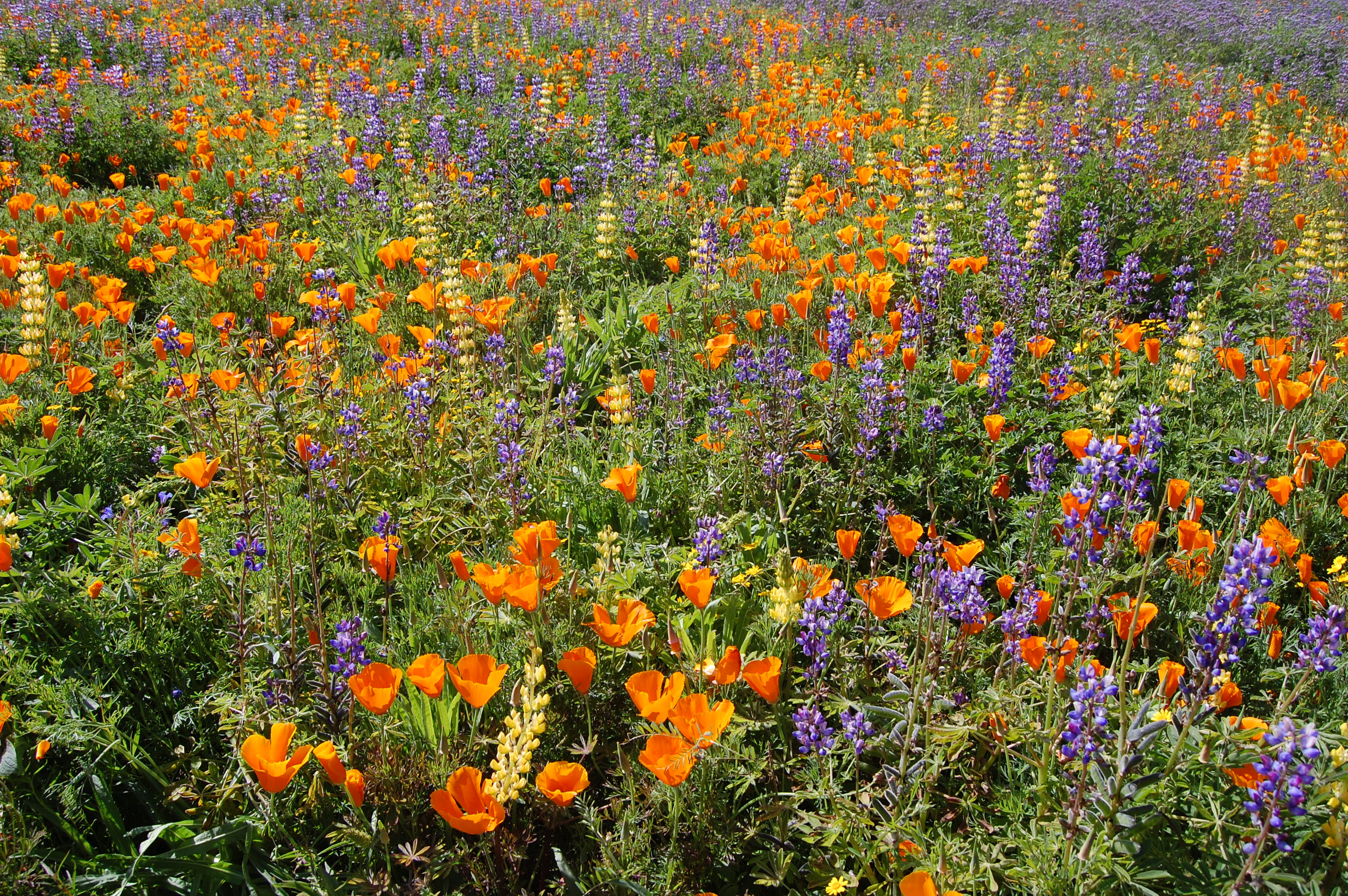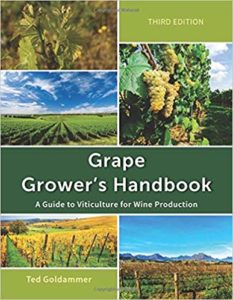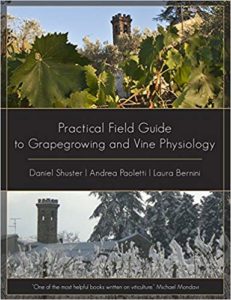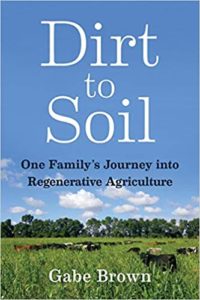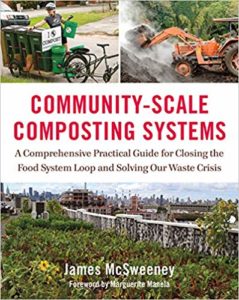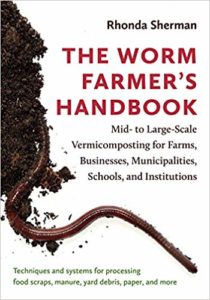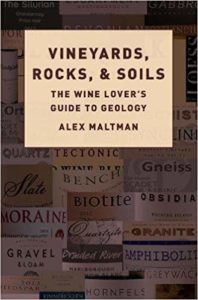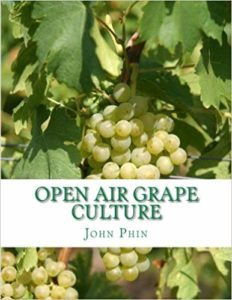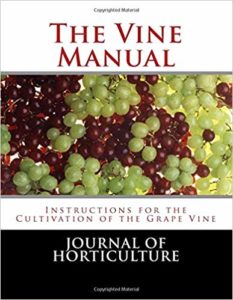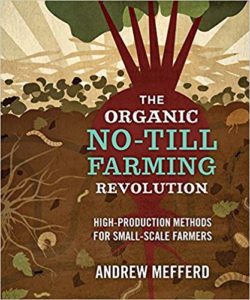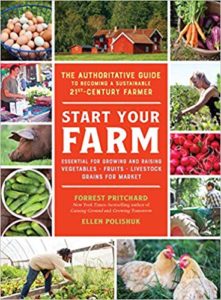JULY 1, 2019. BY LODI WINEGRAPE COMMISSION.
Take a break from the heat and relax by reading one of the ten great books listed below this summer!
Grape Growers Handbook: A Guide To Viticulture for Wine Production
Grapes are among the first fruit species to be domesticated and today are the world’s most economically important fresh fruit crop used to make a variety of fresh, dried and processed products such as wine. It has been said that “the secret to great wine starts in the vineyard,” and “you can make poor-quality wine out of high-quality grapes, but you cannot expect to make great wine from poor-quality grapes.” Growing high-quality grapes for premium wine requires the grower to fully understand the principles of viticulture. The new revised edition of the Grape Grower’s Handbook is a complete rewrite and provides the grower with a broad spectrum of expertise and knowledge in growing grapes for wine grape production in commercial vineyards. Some books offer a strong academic perspective with little practical application on growing grapes for wine production, others books offer a broad overview on growing grapes but provide little detail while most books narrowly focus only on more traditional topics of grape growing. Unlike most books on growing grapes for wine production the Grape Grower’s Handbook is meant to be a stand-alone publication that describes all aspects of wine grape production. The book is written in a nontechnical format designed to be practical and well suited for field application. Some of the topics discussed but not limited to include grapevine growth, varieties, rootstocks, climate requirements, training and pruning, canopy management, development and nutrition, water and soil management, pests and diseases, pesticide application, frost protection, winter protection of grapevines, cover crops, and pre-harvest operations. The book is thoughtfully organized presenting a seamless flow of topics within chapters making it easy to find specific information that interests the reader. No one concerned with the growing of grapes for wine production can afford to be without this book.
Practical Field Guide to Grape Growing and Vine Physiology
Written as an expansive update to the author’s previous book, Practical Field Guide to Grape Growing and Vine Physiology serves as a necessary complement to all the processes of modern grape growing in the variety of climes where grapes are found. Organized by growing cycles, the field guide gives detailed prescriptions for managing each season’s unique processes: vine dormancy, root growth, canopy training, and identifying various pathogens and bacteria in the winter; bud burst, flower cluster development, and canopy construction in the spring; berry growth, respiration rate, water and nitrogen usage, phenolic metabolism, vigor control, and irrigation or dry farming in the summer; and yield estimates, harvesting, and harvest vine management in the autumn.
Dirt to Soil: One Family’s Journey into Regenerative Agriculture
Gabe Brown didn’t set out to change the world when he first started working alongside his father-in-law on the family farm in North Dakota. But as a series of weather-related crop disasters put Brown and his wife, Shelly, in desperate financial straits, they started making bold changes to their farm. Brown―in an effort to simply survive―began experimenting with new practices he’d learned about from reading and talking with innovative researchers and ranchers. As he and his family struggled to keep the farm viable, they found themselves on an amazing journey into a new type of farming: regenerative agriculture.
Brown dropped the use of most of the herbicides, insecticides, and synthetic fertilizers that are a standard part of conventional agriculture. He switched to no-till planting, started planting diverse cover crops mixes, and changed his grazing practices. In so doing Brown transformed a degraded farm ecosystem into one full of life―starting with the soil and working his way up, one plant and one animal at a time.
In Dirt to Soil Gabe Brown tells the story of that amazing journey and offers a wealth of innovative solutions to our most pressing and complex contemporary agricultural challenge―restoring the soil. The Brown’s Ranch model, developed over twenty years of experimentation and refinement, focuses on regenerating resources by continuously enhancing the living biology in the soil. Using regenerative agricultural principles, Brown’s Ranch has grown several inches of new topsoil in only twenty years! The 5,000-acre ranch profitably produces a wide variety of cash crops and cover crops as well as grass-finished beef and lamb, pastured laying hens, broilers, and pastured pork, all marketed directly to consumers.
Community-Scale Composting Systems: A Comprehensive Practical Guide for Closing the Food System Loop and Solving Our Waste Crisis
Composting at scales large enough to capture and recycle the organic wastes of a given community, whether a school, neighborhood, or even a small city, is coming of age, propelled by a growing awareness not only of our food waste crisis, but also the need to restore natural fertility in our soils. In-depth yet accessible, Community-Scale Composting Systems is a technical resource for farmers, designers, service providers, organics recycling entrepreneurs, and advocates of all types, with a focus on developing the next generation of organics recycling infrastructure that can enable communities to close the food-soil loop in their local food systems.
The Worm Farmer’s Handbook: Mid- to Large-Scale Vermicomposting for Farms, Businesses, Municipalities, Schools, and Institutions
The Worm Farmer’s Handbook details the ins and outs of vermicomposting for mid- to large-scale operations, including how to recycle organic materials ranging from food wastes and yard trimmings to manure and shredded office paper. Vermicomposting expert Rhonda Sherman shares what she has learned over twenty-five years working with commercial worm growers and researchers around the world. Her profiles of successful worm growers across the United States and from New Zealand to the Middle East and Europe describe their proven methods and systems.
Vineyards, Rocks, and Soils: The Wine Lover’s Guide to Geology
Jurassic, basalt, moraine, flint, alluvial, magma: what are these words and what do they have to do with wine? The answers are here in this book. They are geological terms that reflect a bond between wine and the land. Understanding geology, however, is tricky. Geological concepts are obscure; processes can be imperceptibly slow, invisible, and unimaginably ancient. The terminology is formidable, such that even the names of common rocks carry an air of mystery.
Geology is introduced plainly, starting with basic principles, all in the context of wine. The emphasis is on the kinds of processes that shape vineyards, and on the minerals, rocks and soils that host the vines. Geological words now commonly seen in wine writings are systematically explained. You will learn the stories behind some of the names, the human face of geology. Vineyards, Rocks, and Soils: The Wine Lover’s Guide to Geology also explores how the geology-wine connection manifests in the finished product and evaluates its importance, particularly in the contexts of minerality, terroir, and wine taste. The fact is that geology is increasingly being promoted in the world of wine; the aim here is to help it be properly understood
Open Air Grape Culture: Garden and Vineyard Culture of the Vine and the Manufacture of Domestic Wine
This special re-print edition of Phin’s book “Open Air Grape Culture” has not been available to those interested in viniculture or growing grapes since it first appeared on the scene back in 1862. Chapters include Natural History of the Grape, The Choice of Soil, Preparation o the Soil, Planting the Vines, Care of the Vines During the First, Second and Third Year, Management of the Fruiting Vine, Subsequent Management of the Vine, Theory and Practice of Pruning and much more. Note: This public domain edition is a perfect facsimile of the original edition and is not set in a modern typeface. As a result, some type characters and images might suffer from slight imperfections or minor shadows in the page background. This edition is reprinted in accordance to Federal Law.
The Vine Manual: Instructions for the Cultivation of the Grape Vine
This special edition of The Vine Manual was published by the Journal of Horticulture in 1879, making it just shy of one-and-a-half centuries old. The book features sections on Soil, Borders, Choice of Plants, Varieties of Grapes, Planting, Pruning, and more. This wonderful old text is a great addition to your historical horticulture library, and a must read for all those interested in the history of Grape Culture. This book is a reprint edition and is a perfect facsimile of the original book. It is not set in a modern typeface and has not been digitally enhanced. As a result, some characters and images might suffer from slight imperfections, blurring, or minor shadows in the page background. This book appears exactly as it did when it was first printed.
The Organic No-Till Farming Revolution: High-Production Methods for Small-Scale Farmers
Farming without tilling has long been a goal of agriculture, yet tilling remains one of the most dominant paradigms; almost everyone does it. But tilling kills beneficial soil life, burns up organic matter, and releases carbon dioxide. If the ground could instead be prepared for planting without tilling, time and energy could be saved, soil organic matter increased, carbon sequestered, and dependence on machinery reduced.
The Organic No-Till Farming Revolution is the comprehensive farmer-developed roadmap showing how no-till lowers barriers to starting a small farm, reduces greenhouse gas emissions, increases efficiency and profitability, and promotes soil health.
Start Your Farm: The Authoritative Guide to Becoming a Sustainable 21st Century Farmer
Do you dream of starting your own farm but wonder where to begin? Or do you already have a farm but wish to become more sustainable to compete in today’s market? Start Your Farm, the first comprehensive business guide of its kind, covers these essential questions and more:
- Why be a farmer in the 21st century? Do you have what it takes?
- What does sustainable really mean, and how can a small (as little as one acre) to midsize farm survive alongside commodity-scale agriculture?
- How do you access education, land, and other needs with limited capital?
- How can you reap an actual profit, including a return on land investment?
- How do you build connections with employees, colleagues, and customers?
- At the end of the day, how do you measure success? (Hint: Cash your lifestyle paycheck.)
More than a practical guide, Start Your Farm is a hopeful call to action for anyone who aspires to grow wholesome, environmentally sustainable food for a living. Take it from Forrest Pritchard and Ellen Polishuk: Making this dream a reality is not for the faint of heart, but it’s well within reach—and there’s no greater satisfaction under the sun!
Book descriptions used for this blog post are taken directly from amazon.com.
Are there books we are missing? Let us know for the next list! stephanie@lodiwine.com
Have something interesting to say? Consider writing a guest blog article!
To subscribe to the Coffee Shop Blog, send an email to stephanie@lodiwine.com with the subject “blog subscribe.”
To join the Lodi Growers email list, send an email to stephanie@lodiwine.com with the subject “grower email subscribe.”
To receive Lodi Grower news and event promotions by mail, send your contact information to stephanie@lodiwine.com or call 209.367.4727.
For more information on the wines of Lodi, visit the Lodi Winegrape Commission’s consumer website, lodiwine.com.

